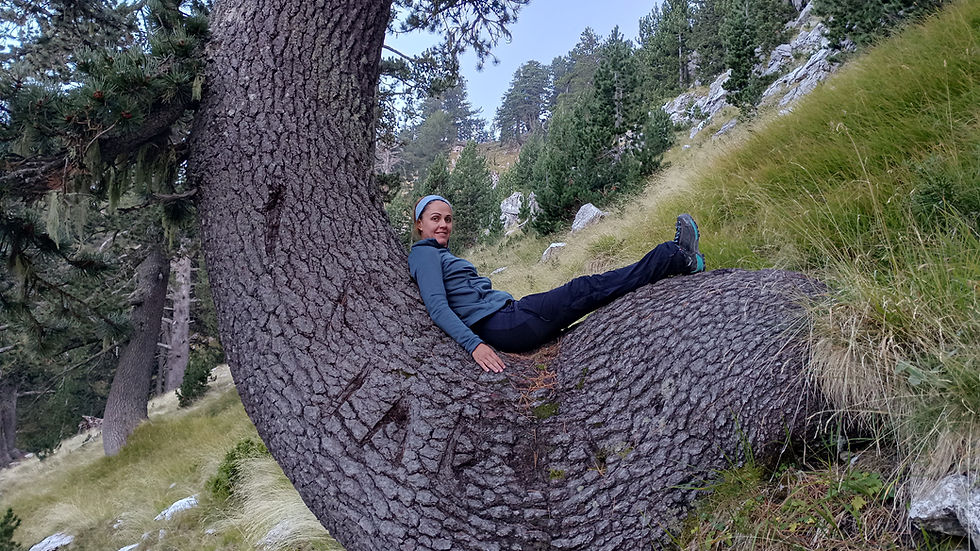Reconnecting with Nature: Bridging the Gap in Urban Life
- Yannis Athanasiou

- Apr 17
- 3 min read
Updated: Jul 20

Understanding Our Disconnection from Nature
In today's rapidly urbanizing world, there is a profound disconnect between people and the natural environment. This alienation is not merely physical; it is also psychological and cultural. The absence of green spaces in cities is a significant factor. As urban life accelerates and technology dominates our daily routines, many people have grown suspicious—or even fearful—of the natural world.
The Fear of Nature
This fear manifests in subtle yet significant ways. People often view nature as an unpredictable threat rather than a vital, living system to which we belong. Trees can become potential hazards during storms. Wild plants are seen as messy or invasive, while insects are regarded as nuisances or dangers. These attitudes reveal more than safety concerns; they highlight a deeper rupture in our relationship with the Earth.
The Impact of Urban Living
The root of this estrangement lies in a lifestyle that separates us from both the natural environment and ourselves. More and more, we spend time indoors, glued to screens, in environments designed for efficiency over well-being. This shift causes us to lose our intuitive understanding that we are part of a larger, living system. The disconnection can lead to general unease and insecurity, reinforcing defensive attitudes toward nature.
Design Decisions Driven by Fear
Globally, this phenomenon affects how we design, manage, and relate to our urban landscapes. When fear overrides understanding, decisions about green spaces often prioritize control and reduction. This approach includes trimming trees to unnatural shapes, removing "unruly" vegetation, and sanitizing parks, stripping them of biodiversity and vitality. The outcome is a sterile urban environment that reflects our anxieties more than our aspirations.
Shifting Our Mindset
To shift this trajectory, we must radically change our mindset. Instead of viewing nature as something external or threatening, we need to see it as an extension of ourselves. This change requires urban planning that integrates green infrastructure. It also demands education, cultural shifts, and daily practices that encourage people to re-engage with the rhythms and realities of the natural world.
Local Actions for Global Change
The challenges we face are global, but solutions begin locally. Every garden, park, and street corner is an opportunity for nature to thrive. By nurturing a more natural way of living, rooted in respect, curiosity, and coexistence, we can begin to restore balance not just in our cities, but also in our inner lives.
Embracing Nature in Urban Spaces
Connecting with nature in urban settings can manifest through various efforts. Community gardens, for example, offer a way for city dwellers to interact with plants and soil. These spaces create opportunities for neighbors to come together and learn from one another, thus bridging social gaps.
Even small actions can cultivate this connection. Planting trees or creating green balconies can transform a concrete landscape into a more inviting and biodiverse environment. Moreover, local initiatives that promote environmental education encourage residents to appreciate and protect their natural surroundings.
The Emotional Benefits of Nature
Engaging with nature isn't just beneficial for the environment; it also has significant emotional benefits. Studies show that spending time in green spaces reduces stress and anxiety. It promotes a sense of well-being and belonging. Just a few minutes spent in a park or garden can lead to improved mental health.
To foster this connection, urban planners should focus on designing accessible green spaces. Parks should incorporate walking paths, seating areas, and natural features that encourage people to spend time outdoors. By enhancing these experiences, we can transform urban life while promoting sustainability.
A Call to Action
As we think about the future of our cities, we should prioritize our relationship with nature. Local governments, communities, and individuals all play a role in shaping a more harmonious existence. By working together, we can cultivate public spaces that are not only beautiful but also vital for our emotional and physical health.
In conclusion, reconnecting with nature is crucial for our well-being and the future of our urban environments. By embracing the ways we can bridge the gap between ourselves and the natural world, we pave the way for healthier, more vibrant communities. Let us remember that as we nurture the environment, we are also nurturing ourselves.






Comments